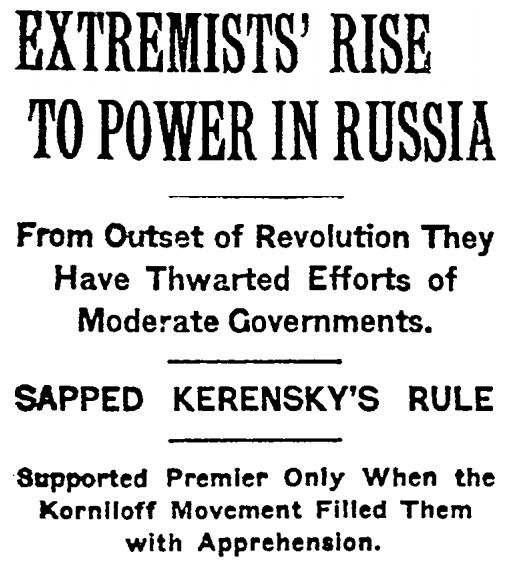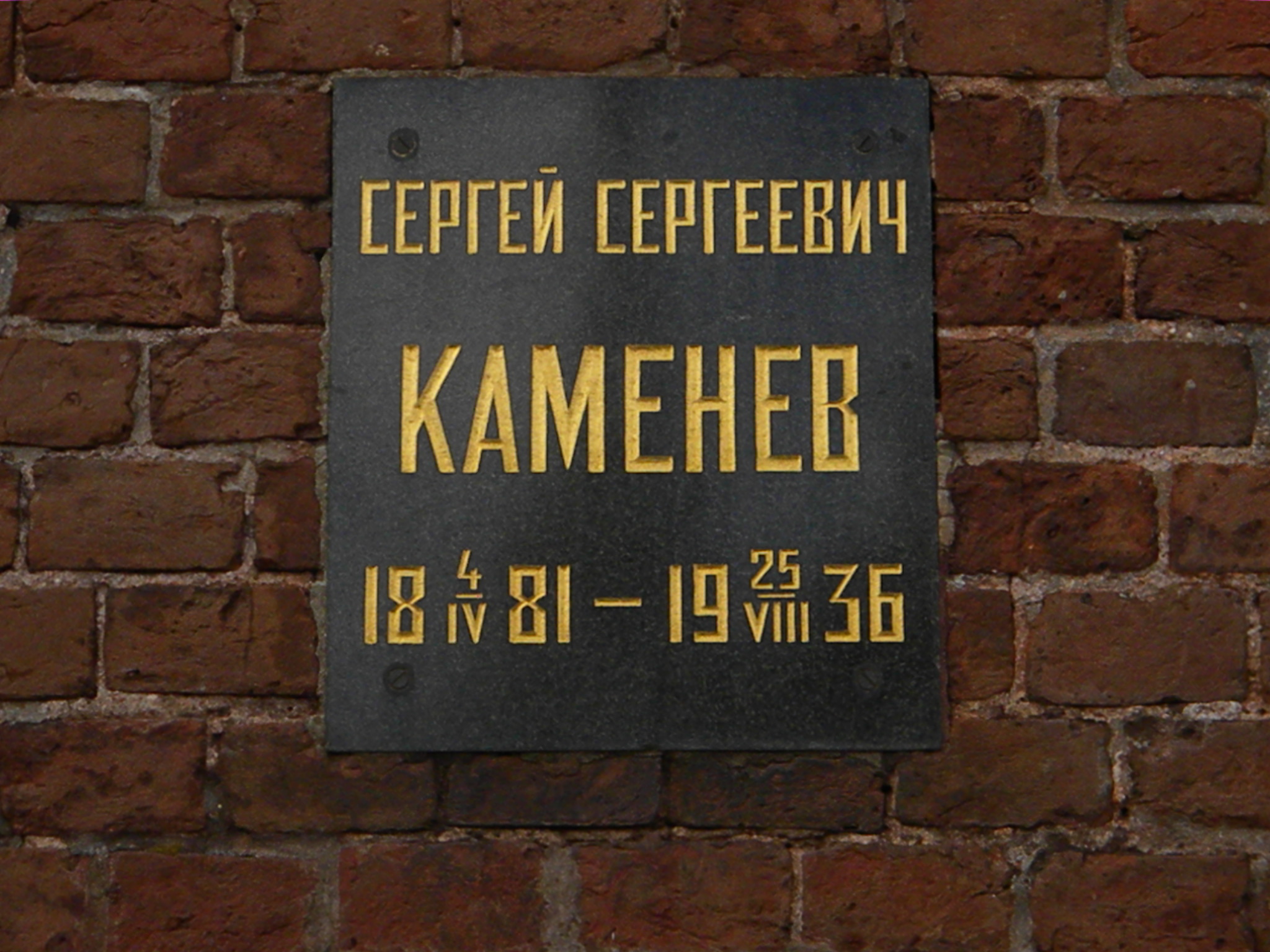|
North Russia Intervention
The North Russia intervention, also known as the Northern Russian expedition, the Archangel campaign, and the Murman deployment, was part of the Allied intervention in the Russian Civil War after the October Revolution. The intervention brought about the involvement of foreign troops in the Russian Civil War on the side of the White movement. The movement was ultimately defeated, while the Allied forces withdrew from Northern Russia after fighting a number of defensive actions against the Bolsheviks, such as the Battle of Bolshie Ozerki. The campaign lasted from March 1918, during the final months of World War I, to October 1919. Reasons behind the campaign In March 1917, after the abdication of Russian Tsar Nicholas II and the formation of a provisional democratic government in Russia, the U.S. entered World War I. The U.S. government declared war on the German Empire in April (and later upon Austria-Hungary) after learning of the former's attempt to persuade Mexico to join ... [...More Info...] [...Related Items...] OR: [Wikipedia] [Google] [Baidu] |
Russian Civil War
, date = October Revolution, 7 November 1917 – Yakut revolt, 16 June 1923{{Efn, The main phase ended on 25 October 1922. Revolt against the Bolsheviks continued Basmachi movement, in Central Asia and Tungus Republic, the Far East through the 1920s and 1930s.{{cite book, last=Mawdsley, first=Evan, title=The Russian Civil War, location=New York, publisher=Pegasus Books, year=2007, isbn=9781681770093, url=https://archive.org/details/russiancivilwar00evan, url-access=registration{{rp, 3,230(5 years, 7 months and 9 days) {{Collapsible list , bullets = yes , title = Peace treaties , Treaty of Brest-LitovskSigned 3 March 1918({{Age in years, months, weeks and days, month1=11, day1=7, year1=1917, month2=3, day2=3, year2=1918) , Treaty of Tartu (Russian–Estonian)Signed 2 February 1920({{Age in years, months, weeks and days, month1=11, day1=7, year1=1917, month2=2, day2=2, year2=1920) , Soviet–Lithuanian Peace TreatySigned 12 July 1920({{Age in years, months, weeks and da ... [...More Info...] [...Related Items...] OR: [Wikipedia] [Google] [Baidu] |
Nikolai Yudenich
Nikolai Nikolayevich Yudenich ( – 5 October 1933) was a commander of the Russian Imperial Army during World War I. He was a leader of the anti-communist White movement in Northwestern Russia during the Civil War. Biography Early life Yudenich was born in Moscow, where his father was a minor court official. Yudenich graduated from the Alexandrovsky Military College in 1881 and the General Staff Academy in 1887. He first served with the Life Guards Regiment in Lithuania from November 1889 to December 1890. In January 1892, he was transferred to the Turkestan Military District, and was promoted to lieutenant colonel in April 1892. He was a member of the Pamir Expedition in 1894, and was promoted to colonel in 1896. From September 20, 1900 Yudenich served on the staff of the 1st Turkestan Rifle Brigade. In 1902, Yudenich was appointed commander of the 18th Infantry Regiment, which he continued to command during the Russo-Japanese War The Russo-Japanese War ( ja, 日� ... [...More Info...] [...Related Items...] OR: [Wikipedia] [Google] [Baidu] |
Bolsheviks
The Bolsheviks (russian: Большевики́, from большинство́ ''bol'shinstvó'', 'majority'),; derived from ''bol'shinstvó'' (большинство́), "majority", literally meaning "one of the majority". also known in English as the Bolshevists,. It signifies both Bolsheviks and adherents of Bolshevik policies. were a far-left, revolutionary Marxist faction founded by Vladimir Lenin that split with the Mensheviks from the Marxist Russian Social Democratic Labour Party (RSDLP), a revolutionary socialist political party formed in 1898, at its Second Party Congress in 1903. After forming their own party in 1912, the Bolsheviks took power during the October Revolution in the Russian Republic in November 1917, overthrowing the Provisional Government of Alexander Kerensky, and became the only ruling party in the subsequent Soviet Russia and later the Soviet Union. They considered themselves the leaders of the revolutionary proletariat of Russia. Their beli ... [...More Info...] [...Related Items...] OR: [Wikipedia] [Google] [Baidu] |
October Revolution
The October Revolution,. officially known as the Great October Socialist Revolution. in the Soviet Union, also known as the Bolshevik Revolution, was a revolution in Russia led by the Bolshevik Party of Vladimir Lenin that was a key moment in the larger Russian Revolution of 1917–1923. It was the second revolutionary change of government in Russia in 1917. It took place through an armed insurrection in Petrograd (now Saint Petersburg) on . It was the precipitating event of the Russian Civil War. The October Revolution followed and capitalized on the February Revolution earlier that year, which had overthrown the Tsarist autocracy, resulting in a liberal provisional government. The provisional government had taken power after being proclaimed by Grand Duke Michael, Tsar Nicholas II's younger brother, who declined to take power after the Tsar stepped down. During this time, urban workers began to organize into councils (soviets) wherein revolutionaries criticized the pro ... [...More Info...] [...Related Items...] OR: [Wikipedia] [Google] [Baidu] |
Allied Intervention In The Russian Civil War
Allied intervention in the Russian Civil War or Allied Powers intervention in the Russian Civil War consisted of a series of multi-national military expeditions which began in 1918. The Allies first had the goal of helping the Czechoslovak Legion in securing supplies of munitions and armaments in Russian ports; during which the Czechoslovak Legion controlled the entire Trans-Siberian Railway and several major cities in Siberia at times between 1918 and 1920. By 1919 the Allied goal became to help the White forces in the Russian Civil War. When the Whites collapsed the Allies withdrew their forces from Russia by 1920 and further withdrawing from Japan by 1922. The goals of these small-scale interventions were partly to stop Germany from exploiting Russian resources, to defeat the Central Powers (prior to the Armistice of November 1918), and to support some of the Allied forces that had become trapped within Russia after the 1917 Bolshevik revolution. Allied troops landed in ... [...More Info...] [...Related Items...] OR: [Wikipedia] [Google] [Baidu] |
Treaty Of Brest-Litovsk
The Treaty of Brest-Litovsk (also known as the Treaty of Brest in Russia) was a separate peace, separate peace treaty signed on 3 March 1918 between Russian SFSR, Russia and the Central Powers (German Empire, Germany, Austria-Hungary, Kingdom of Bulgaria, Bulgaria, and the Ottoman Empire), that ended Eastern Front (World War I), Russia's participation in World War I. The treaty was signed at German-controlled Brest-Litovsk ( pl, Brześć Litewski; since 1945, Brest, Belarus, Brest, now in modern Belarus), after two months of negotiations. The treaty was agreed upon by the Russians to stop further invasion. As a result of the treaty, Soviet Russia defaulted on all of Imperial Russia's commitments to the Allies of World War I, Allies and eleven nations became independent in eastern Europe and western Asia. Under the treaty, Russia lost all of Ukrainian People's Republic, Ukraine and most of Belarusian People's Republic, Belarus, as well as its three Baltic states, Baltic republics of ... [...More Info...] [...Related Items...] OR: [Wikipedia] [Google] [Baidu] |
Bolshevik Revolution
The October Revolution,. officially known as the Great October Socialist Revolution. in the Soviet Union, also known as the Bolshevik Revolution, was a revolution in Russia led by the Bolsheviks, Bolshevik Party of Vladimir Lenin that was a key moment in the larger Russian Revolution, Russian Revolution of 1917–1923. It was the second revolutionary change of government in Russia in 1917. It took place through an armed insurrection in Petrograd (now Saint Petersburg) on . It was the precipitating event of the Russian Civil War. The October Revolution followed and capitalized on the February Revolution earlier that year, which had overthrown the Tsarist autocracy, resulting in a liberal Russian Provisional Government, provisional government. The provisional government had taken power after being proclaimed by Grand Duke Michael Alexandrovich of Russia, Grand Duke Michael, Nicholas II of Russia, Tsar Nicholas II's younger brother, who declined to take power after the Tsar st ... [...More Info...] [...Related Items...] OR: [Wikipedia] [Google] [Baidu] |
Dmitry Nikolayevich Nadyozhny
Dmitry Nikolayevich Nadyozhny (russian: Дмитрий Николаевич Надёжный; , Nizhny Novgorod - 22 February 1945, Moscow) was a commander in the Russian Imperial Army who later joined the Red Army. He rose to lieutenant general and fought in the First World War and Russian Civil War, commanding the Red Army's northern front in the latter. Early life Nadyozhny was born into a noble family from Nizhny Novgorod and graduated from the 1st Military Pavolvsky School in 1892. He was commissioned as a Lieutenant in the 14th Georgian grenadier regiment, and later transferred to the 10th Siberian Rifles. During the Russo-Japanese War he served as a staff captain and was awarded the Order of St George. Shortly before the outbreak of World War I he was a military adviser in Mongolia. World War I When the war began, Nadyozhny was assigned command of the 40th Kolyvan Infantry Regiment. In 1915 he was promoted to Major General, and by 1916 he was chief of staff to the 69th ... [...More Info...] [...Related Items...] OR: [Wikipedia] [Google] [Baidu] |
Dmitri Parsky
Dmitri Pavlovich Parsky (russian: Дми́трий Па́влович Па́рский) ( in Tula – 20 December 1921) was a Russian general of the Imperial Russian Army during World War I, who fought on the Eastern Front. In 1893 he attended the General Staff Academy. In World War I, he commanded the 12th Army from 20 July to 9 September 1917 and the 3rd Army from 9 September 1917 to 8 November 1917. He was the first battle-experienced Tsarist General to offer his services to the Red Army, explaining his viewpoint thus :''"I am far from this Bolshevism you preach. But I am ready to work honourably not only with them, but with anyone, even the Devil and his disciples, if only to save Russia from German slavery."''''The Russian Civil War'' by Evan Mawdsley, p 83. During the Russian Civil War, he first was commander of the Narva Front and later of the entire Northern Front. He died of typhus in 1921. Honours and awards *Order of St. Stanislaus, 3rd class (1896); * Order o ... [...More Info...] [...Related Items...] OR: [Wikipedia] [Google] [Baidu] |
Aleksandr Samoylo
Alexander Alexandrovich Samoylo (russian: Алекса́ндр Алекса́ндрович Само́йло; October 23 (November 4) 1869 – November 8, 1963) was a commander in the Imperial Russian Army and Red Army during World War I and the Russian Civil War. Before the 1917 Russian Revolution, he was a major general on the general staff and Chief of Staff of the 10th Army. After the Russian Revolution, he was made commander of the 6th Red Army on the Northern Front between 22 November 1918 and 15 April 1920. In that capacity, he fought against the Allied intervention in Northern Russia. He also commanded the Red Army Eastern front during 4 weeks in May 1919. In 1940, he became lieutenant general of aviation and in 1943 a professor. He was a member of the Communist Party of the Soviet Union from 1944 onwards. He was a recipient of the Order of Lenin The Order of Lenin (russian: Орден Ленина, Orden Lenina, ), named after the leader of the ... [...More Info...] [...Related Items...] OR: [Wikipedia] [Google] [Baidu] |
Sergey Kamenev
Sergey Sergeyevich Kamenev (russian: Серге́й Серге́евич Ка́менев; April 16 Old_Style_and_New_Style_dates">O.S._April_4.html" ;"title="Old_Style_and_New_Style_dates.html" ;"title="nowiki/>O.S._April_4">Old_Style_and_New_Style_dates.html"_;"title="nowiki/>Old_Style_and_New_Style_dates">O.S._April_4_1881_–_August_25,_1936)_was_a_Soviet_Union.html" "title="Old Style and New Style dates">O.S. April 4">Old_Style_and_New_Style_dates.html" ;"title="nowiki/>Old Style and New Style dates">O.S. April 4 1881 – August 25, 1936) was a Soviet Union">Soviet military leader who reached Komandarm 1st rank. Kamenev was born in Kiev. In World War I he commanded a regiment in the rank of Colonel. He became a member of the All-Union Communist Party (Bolsheviks) in 1918. In July 1919, Kamenev replaced Jukums Vācietis as Commander-in-chief of the Red Army during the Russian Civil War. Kamenev was a member of the Revolutionary Military Council of the USSR from April 1924 ... [...More Info...] [...Related Items...] OR: [Wikipedia] [Google] [Baidu] |





.jpg)


